Egypt’s Ministry of Tourism and Antiquities has reopened the Süleyman Pasha Mosque inside the Saladin Citadel in southern Cairo after restoration.
The first Ottoman-style mosque in Egypt was built in 1528. It was the first classical Ottoman architecture into Egypt.
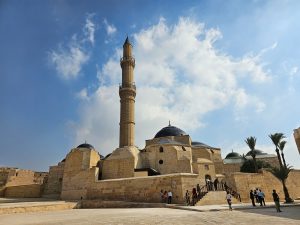
Since its reopening on September 16, the Süleyman Pasha Mosque has received a large number of important figures, including Turkish Ambassador to Cairo, Salih Mutlu Şen, who was eager to visit this symbol of common history between Türkiye and Egypt.
He tours the mosque, listening carefully to Egyptian experts who did the restoration and renovation work. He asked about every detail of the work, looking at decorations, reading the inscriptions and observing the detailed gilded, colourful decorations in the domes. He took photos at every part of the mosque.
“I can’t find words to thank you for this effort,” he told Citadel Antiquities experts.
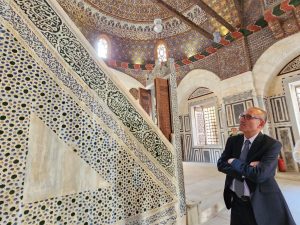
“The Turkish people have lived side by side with Egyptians for hundreds of years. They are attached to monuments here,” Ambassador Mutlu Şen said.
“The Turkish media talk about the restoration of the mosque. They were very happy when they knew that Egypt had renovated it. They will visit it,” he added.
After the beginning of Ottoman rule in Egypt in 1517, the Ottoman impact started to show itself with the construction of new architectural buildings particularly in Cairo. It is known that the number of newly built Ottoman structures as well as those altered and restored exceeds 350 in Egypt during a period of over three hundred years when the area was under Ottoman rule.
Prior to 1517, there was a well-established Islamic architectural style in Egypt. This Egyptian style of Islamic tradition started to transform into the Ottoman style following 1528 with the completion of the construction of the Süleyman Pasha Mosque.
Süleyman Pasha was governor of Egypt during the reign of Sultan Suleiman the Magnificent (1520-1566). The mosque was constructed on the ruins of a mosque commissioned by Abu Mansur Qasta, a governor of Alexandria in the Fatimid era.
Mohamed Khalil, Deputy Director General of the Citadel Antiquities, told The Egyptian Gazette that the mosque has three entrances and consists of prayer house, open courtyard, kuttab for memorising the Holy Quran, pencil-shaped minaret, marble mihrab, ablution area, mausoleum of the Fatimid governor in addition to several marble structures and tombstones of mausoleums for notable figures from the Ottoman era.
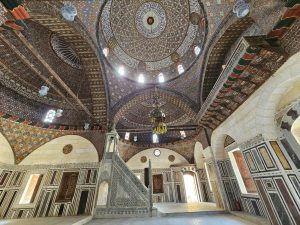 This mosque adopts one of the main Ottoman plan schemes. The prayer hall is covered by a central dome flanked by three semi domes. This is fronted by a courtyard surrounded by domed arcades.
This mosque adopts one of the main Ottoman plan schemes. The prayer hall is covered by a central dome flanked by three semi domes. This is fronted by a courtyard surrounded by domed arcades.
The prayer house consists of a square area covered with a central dome, surrounded by three iwans covered with half-domes stone.
The mosque’s marble pulpit is distinctive with floral and geometric decorations. The open courtyard is surrounded by four iwans covered with shallow domes.
Khalil said the mosque was established for the Janissaries (new soldiers), members of an elite corps in the standing army of the Ottoman Empire from the late 14th century to 1826 and the first modern standing army in Europe. They were settled in the mosque and its surrounding area.
The mosque has been renovated through centuries. Mohamed Ai Pasha (1805-1848) added the portico at the western entrance. The Comité de Conservation des Monuments de l’Art Arabe restored the mosque in 1891.
King Farouk I (1939-1952) made some renovations inside the mosque. His name can be seen inscribed on the wooden window shutters.
The recent restoration work began in 2018. All work was carried out under the supervision of the Islamic, Coptic, and Jewish Projects and Antiquities Sectors of the Supreme Council of Antiquities (SCA), which funded the restoration cost LE5 million ($161,536).
 The work included careful architectural restoration work by removing calcifications, dust, and dirt, reinforcing inscriptions and seasoning wood, and performing the necessary maintenance for marble.
The work included careful architectural restoration work by removing calcifications, dust, and dirt, reinforcing inscriptions and seasoning wood, and performing the necessary maintenance for marble.
The work of insulating and protecting layers for the decorated wooden plate using internationally known materials is the basis for restoration, in addition to the work of installing ceramic tiles for all 23 domes of the mosque which are clad from outside with green and blue tiles, as well as completing the work of developing the internal lighting network for the mosque and the kuttab.

The work also included restoring the shrine from the inside and outside, restoring the colourful decorations of the interior domes, as well as restoring the facades, cleaning them of accumulated dirt on the stones, and restoring the marble in the courtyard, the prayer house, and the unique marble pulpit.
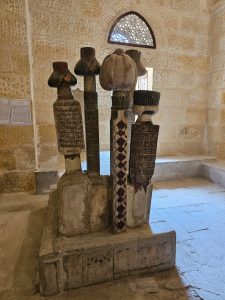
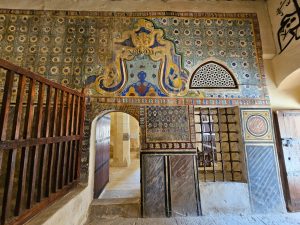
SCA Secretary General Mostafa Waziry said that the reopening of this mosque is considered a new addition to the archaeological sites in the Citadel and will increase the tourist movement within it.
Built in the 12th century, the Cairo Citadel still attracts sightseers as an iconic landmark in Cairo.
Standing on the Muqattam Hill, its location gives the visitors the chance of seeing a panoramic view of Cairo with its mosques, streets, buildings and the Giza Pyramids.
Salahuddin Al-Ayyubi (1137 –1193) ordered its construction as a fortress on that high hill. Its construction was finished later during the reign of Sultan Kamel al-Adil (1200–1218) and remained Cairo’s seat for Egypt’s rulers until the 19th century, when it was moved to Abdeen Palace in downtown Cairo.
The Mohamed Ali Mosque is among beautiful monuments in the Citadel which was added to it in the 19th century. It was previously the site of Mamluk palaces.
Another mosque in the Citadel is Al-Naser Mohamed ibn Qalawun Mosque, which was built in 1318 on the site of an Ayyubid mosque.
Sultan Al-Naser Mohamed ruled Egypt three times between 1293 until his death in 1341. He fought the Crusaders and Mongols. During his third reign, Egypt witnessed an urban renaissance unprecedented during the reign of any other Mamluk sultans.



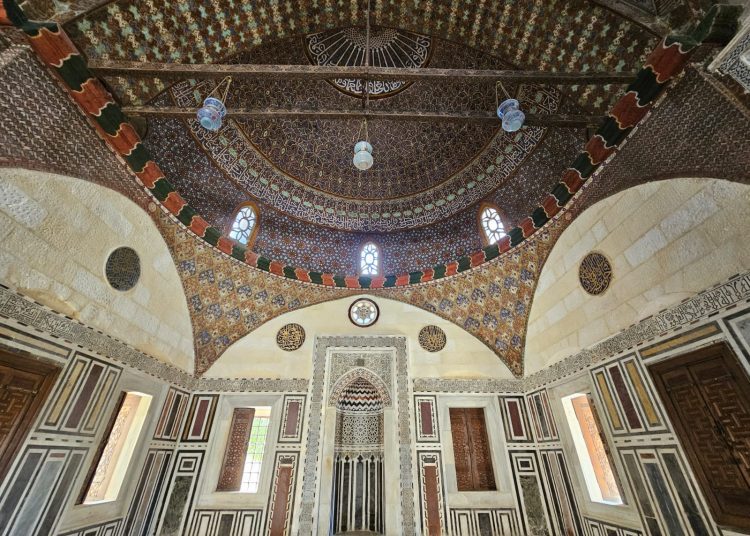


Discussion about this post